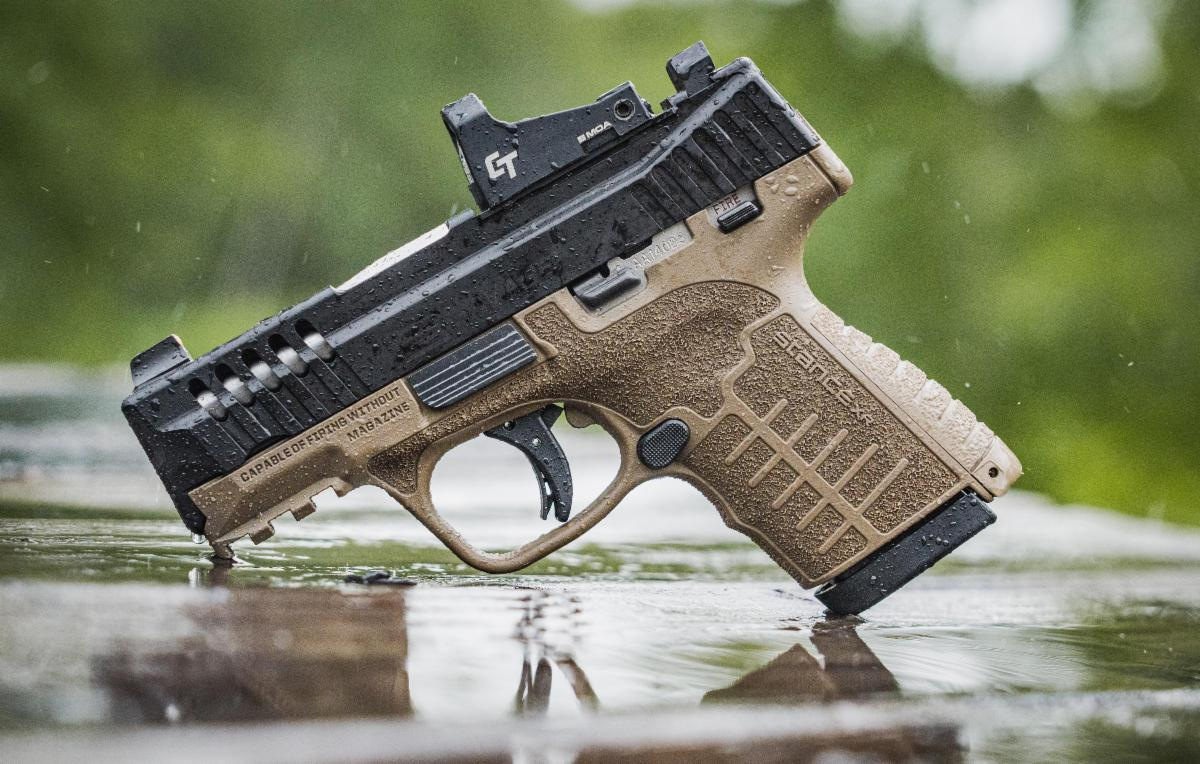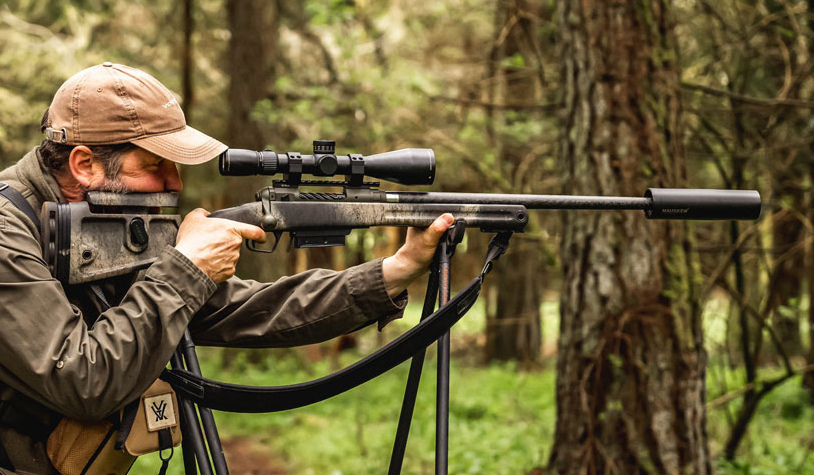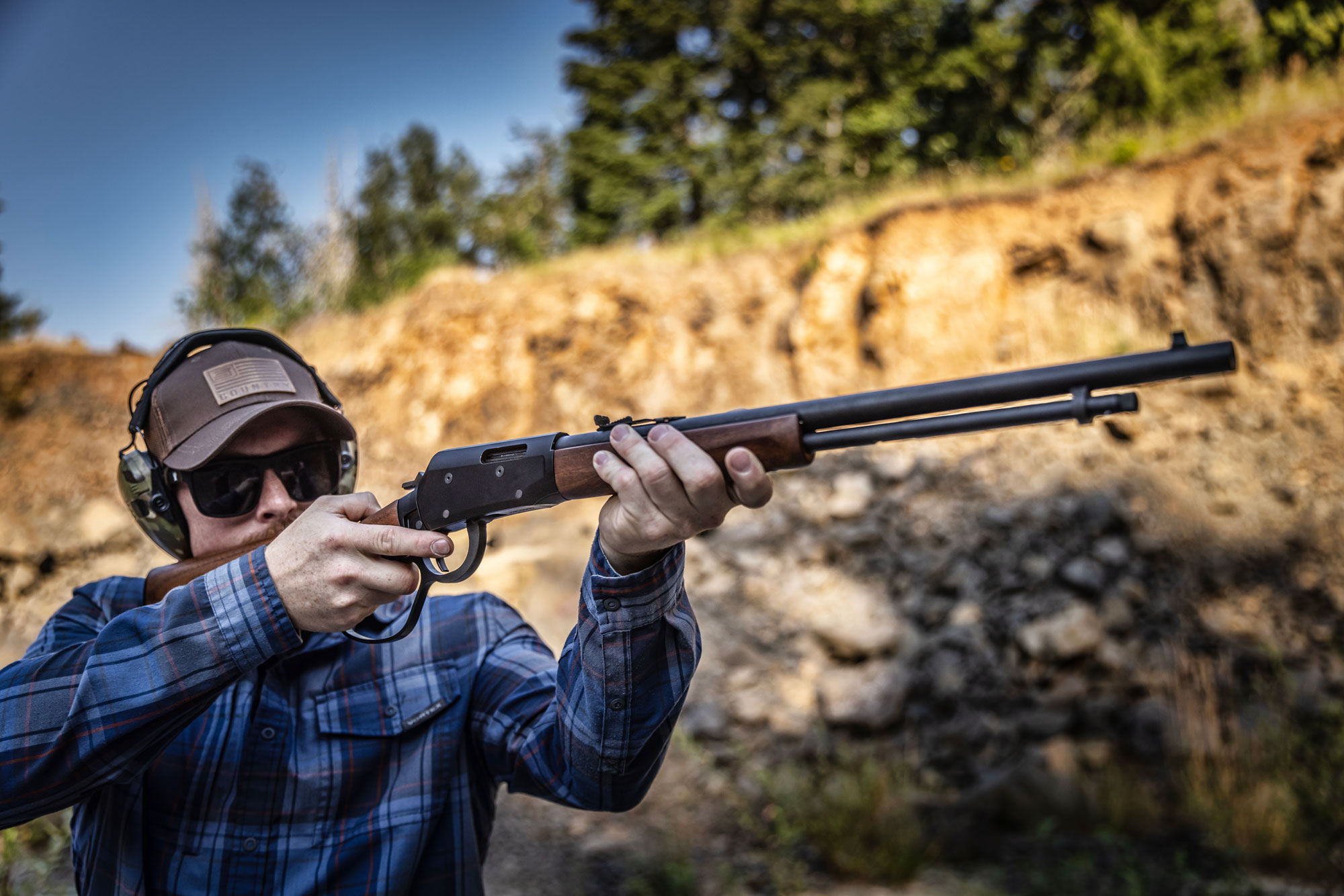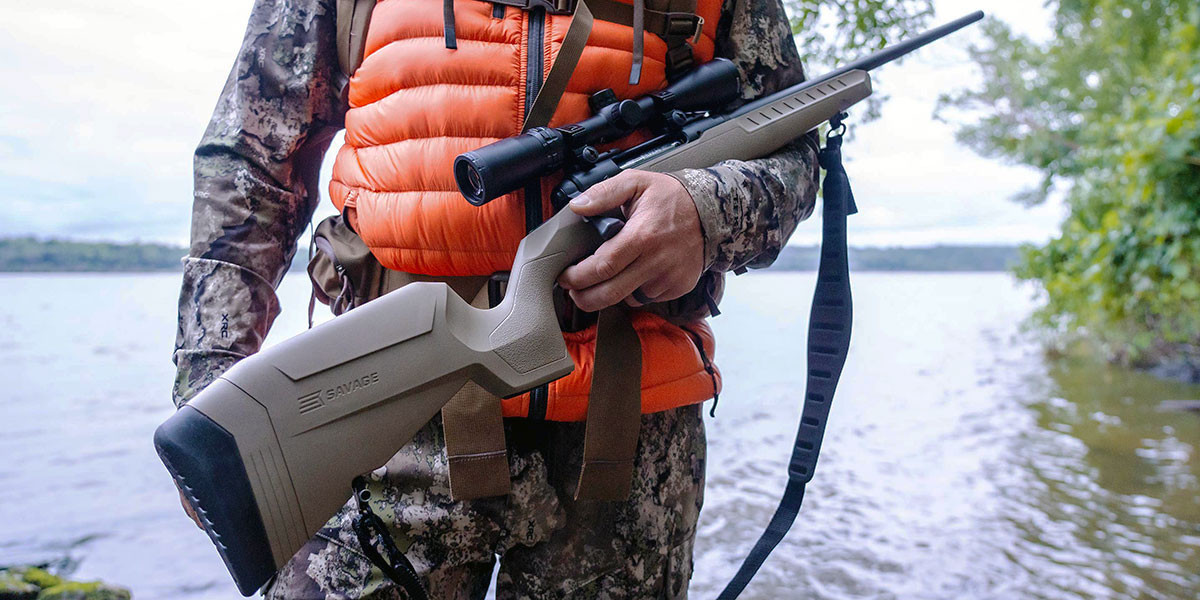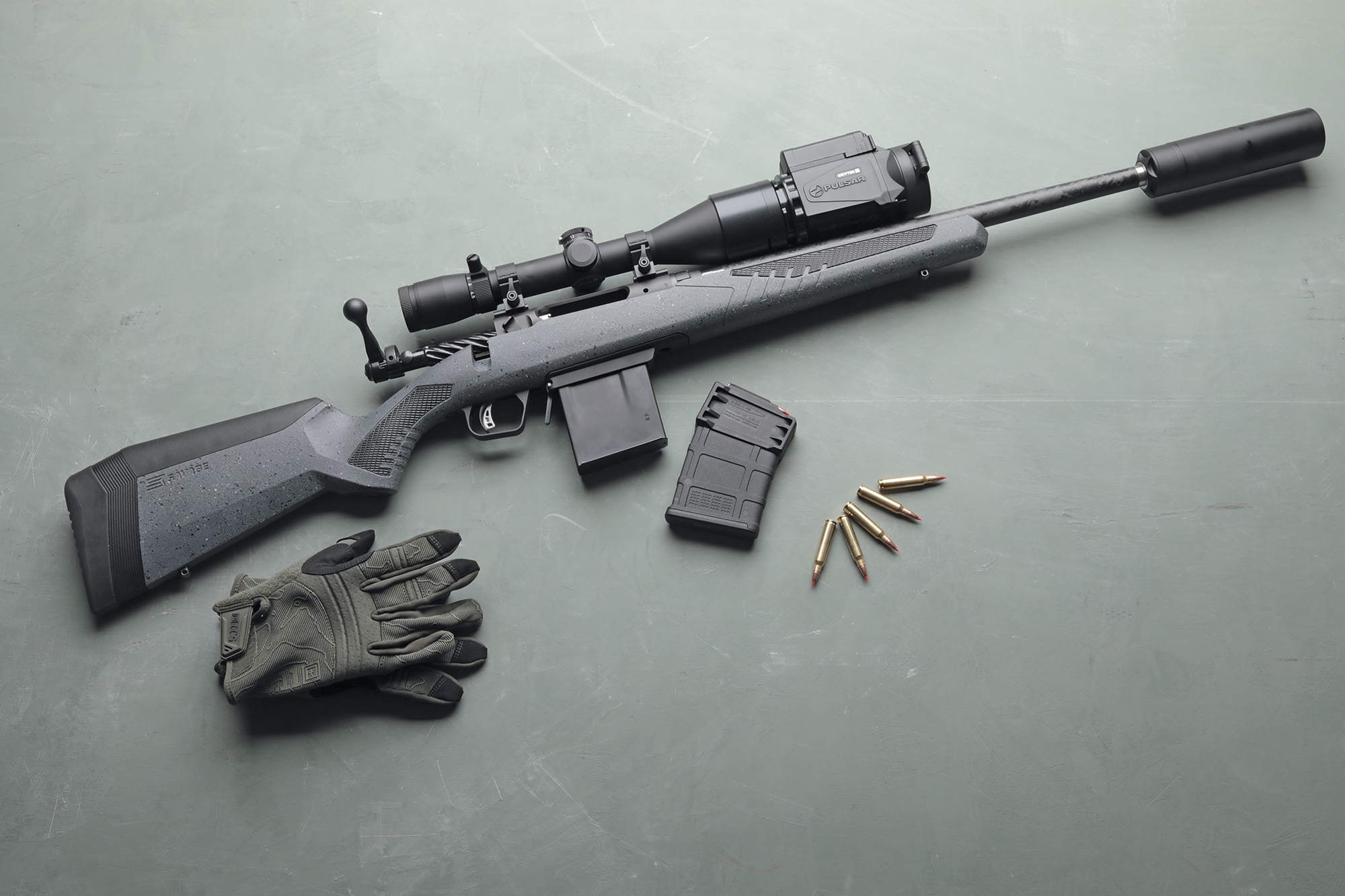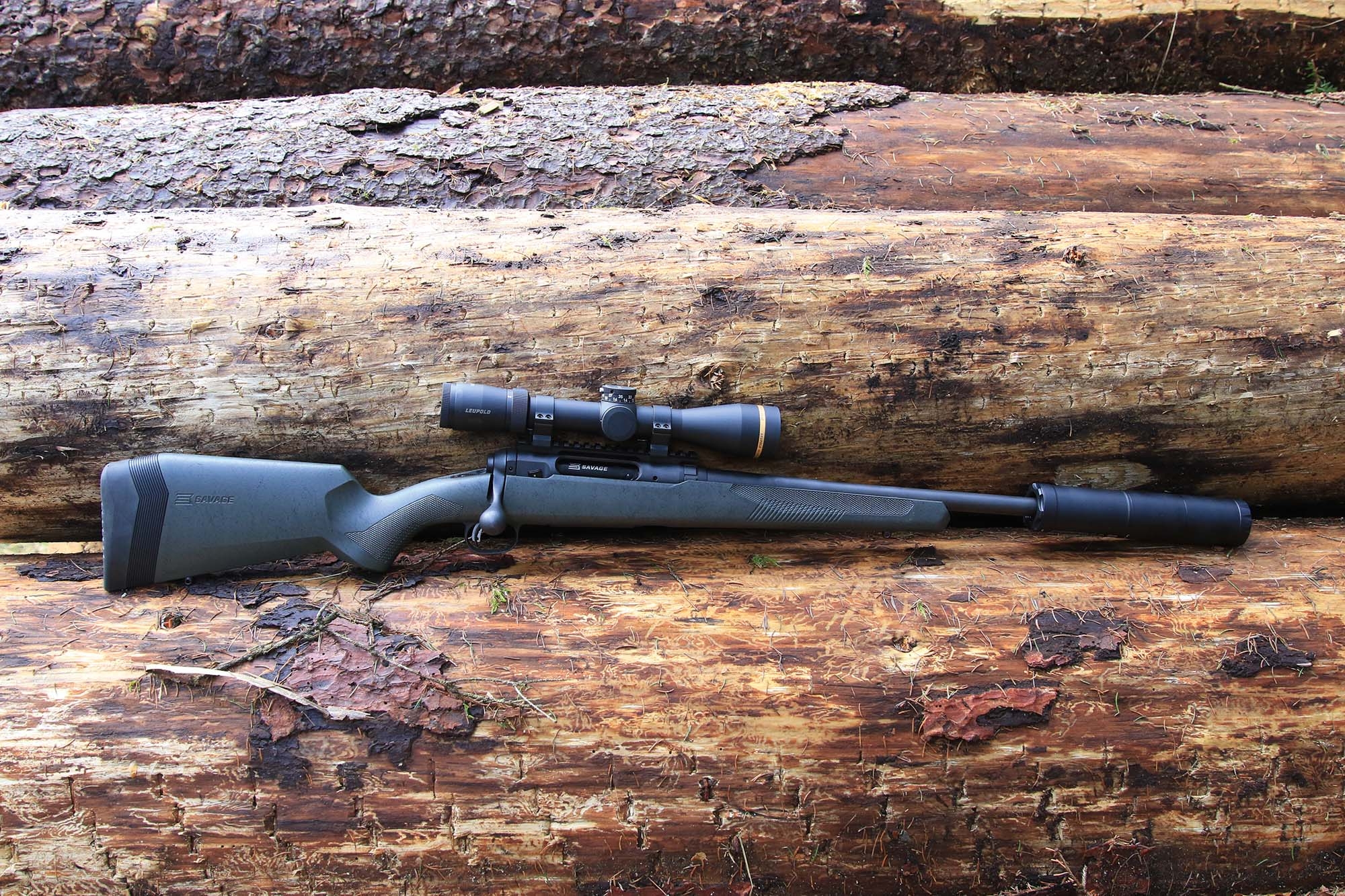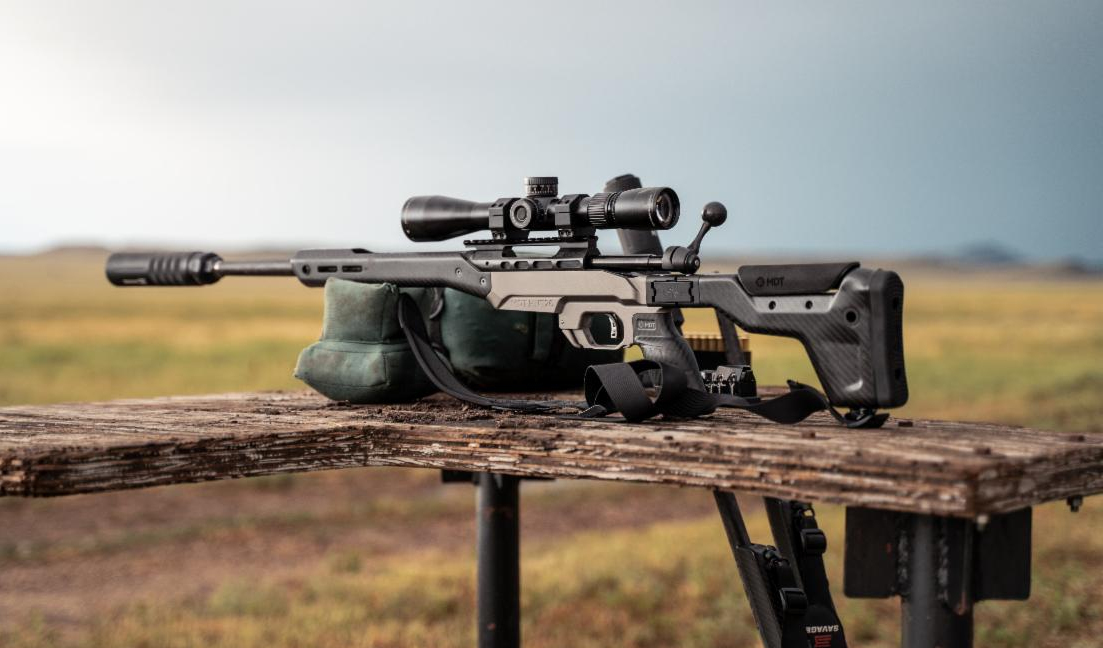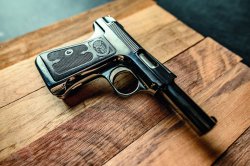
Modern bolt-action and semi-automatic rifles in an impressive variety of models and calibers, including specialized versions for PRS/Long Range shooting, are probably the first things that come to mind when one hears the sonorous U.S. manufacturer's name Savage Arms. Connoisseurs of the subject may also have associations with the innovative straight-pull repeaters of the Impulse series or the attractive self-loading shotguns of the young Renegauge series. But few know that Savage made pistols a long time ago. Exactly 115 years ago, the Model 1907 appeared, set up for .32 ACP (7.65 Browning) and .380 ACP (9mm Browning/Short) calibers. The pistol with a rotating barrel even mingled as a .45 ACP version along with the P08, Bergmann, White-Merrill 1907 and the hulking Knoble in the U.S. Army tender in the early 20th century. However, the .45 caliber required by the military caused some problems for the already-improved 1907 model, and John Moses Browning's Colt Government Model of 1911 ultimately emerged as the clear winner. The rest is history.
Savage: return to the pistol business
Savage seems to have jumped over its own shadow after almost 12 decades and now offers its own pistols in the design of the former arch-enemy. After the Stance polymer framed compact pistol for concealed carry, which was released last year, the company recently introduced its own 1911 pistol series. It's hard to believe, because the 1911 market, which is always highly competitive, should have been pretty much tapped out by now. But it seems that JMB's big hit has lost none of its appeal even after more than 110 years. With the lush number of manufacturers, it is becoming increasingly difficult to stand out in the market. In order to stand out, one should offer something special or come up with a very good price/performance ratio. Let's see where our two protagonists will rank.
The 1911 pistols from Savage Arms in detail
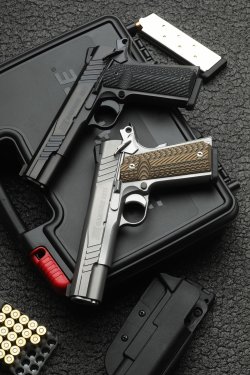
The Savage Arms 1911 pistols in the classic Government size with 5"/127 mm barrel are available both with and without a frame rail for gun lights/laser modules on the dust cover. According to the manufacturer, the main components of the grip section and slide are forged stainless steel – the black version have an additional nitrocarburized finish. The sheet steel magazines hold 8 cartridges in .45 Auto. Models in 9mm Luger are to follow in the summer and are certainly the more interesting choice for most shooters thanks to lower maintenance costs. The classic contour barrel with bushing has no ramp and features an electrochemical rifling and a clean 11-degree target muzzle crown. Perched on the slide with rear and front serrations and a sweeping trim line that transitions into the front serrations", is a lo-mount Novak-style rear sight combined with a white-dot front sight. At least elevation of the point of impact can thus be quickly adjusted. For windage adjustment, one of the sights must be moved. Incidentally, the manufacturer states that the hammer, disconnector and seat are made of tool steel. This would allow the trigger parts to be tuned if necessary, which usually proves difficult with MIM components.
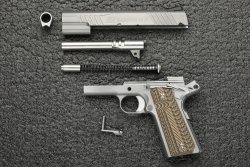
Whether you need that is another matter, because at around 1,800 grams with minimal creep, the trigger of the test gun was already usable "out of the box". The frame and slide play was low. Only the barrel yielded a little when pressed with the thumb in the area of the ejection port and locked onto the slide stop. Together with the somewhat stiff safety on both sides, these were the only minor flaws we noticed. The precision-fit G-10 grips from US specialist VZ Grips provide a good grip. A feature that is usually more familiar from high-capacity 1911/2011-based Race Guns can be found inside in the form of the titanium firing pin. Its low mass ensures a reduced lock time. We measured exactly 6 milliseconds with the Triggerscan system, which brings a reduction of 1 to 2 milliseconds compared to a conventional steel firing pin. Incidentally, striker-fired guns make it in about half the time thanks to the lack of a hammer and minimal travel. Whether this generally brings an advantage in sports is certainly debatable, but sometimes faith is said to move mountains. The ejection port has been enlarged for better functional reliability. On the short spring guide rod, there are two interlocking recoil springs. This is usually only found on compact 1911 Commander or Officers pistols, where the spring installation space is limited. There was nothing to complain about in terms of the general build quality.
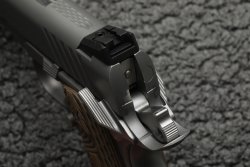
With the Savage Arms 1911s in .45 ACP on the shooting range
For the shooting performance test, we selected 10 loads ranging from 185 to 230 grains, including two handloads. The best result was achieved by the Hornady American Gunner 185-grain XTP, with a 43-mm grouping. This means that the two best loadings can be used for target shooting in static precision disciplines. The average of all loads was 62 mm. Malfunctions in our test were only experienced with the Magtech 230-grain SWC. The blunt-nosed semi-wadcutter bullet occasionally had trouble slipping into the chamber. Our handload with the 195-grain H&N SWC bullet managed to be chambered more easily possibly thanks to a longer cartridge length.
Overview: all specs and prices of the Savage 1911
| Model: | Savage 1911 |
| Caliber: | .45 ACP |
| Magazine Capacity: | 8 rounds |
| Frame: | Stainless steel (black nitride coated) |
| Slide: | Stainless steel (black nitride coated) |
| Barrel Length profile: | 128 mm, 6 RH grooves |
| Twist Rate: | 1:16" |
| Rear Sight: | 3.6 mm, Novak style, elevation adjustable |
| Front Sight: | 3.1 mm, white dot |
| Sight Radius: | 179 mm |
| Safety: | Frame-mounted thumb safety, grip safety |
| Trigger, Trigger Weight/Travel*: | SA, 1,844 grams/114 mm |
| Lock Time*: | 6 ms |
| Weight (incl. magazine): | 1,136 g |
| Dimensions (LxWxH): | 221x39x147 mm |
| Extras: | Hard case with spare magazine |
| Price (MSRP in the U.S.): | From $1,349 to $1,499 |
| * Mean of 10 measurements with the Trigger Scan System | |
Conclusion: our impression of the new Savage 1911 pistols
All in all, the new Savage 1911s made a solid impression with appealing features and attractive design details. With selected ammunition, they are also suitable for static precision disciplines, and in more dynamic shooting disciplines such as IPSC Classic Division, the shooting performance is always sufficient. Whether they can hold their own against all the competitors in the dense market segment remains to be seen.



